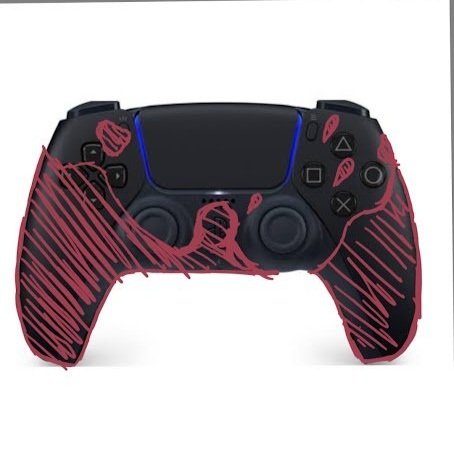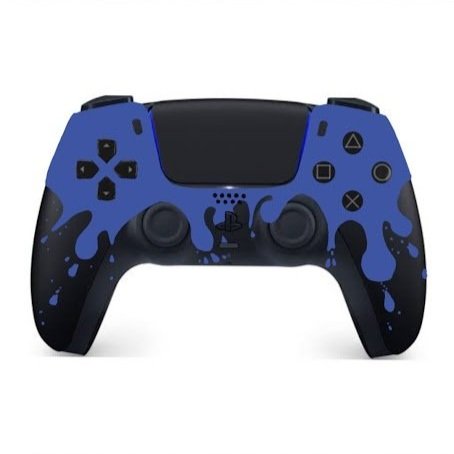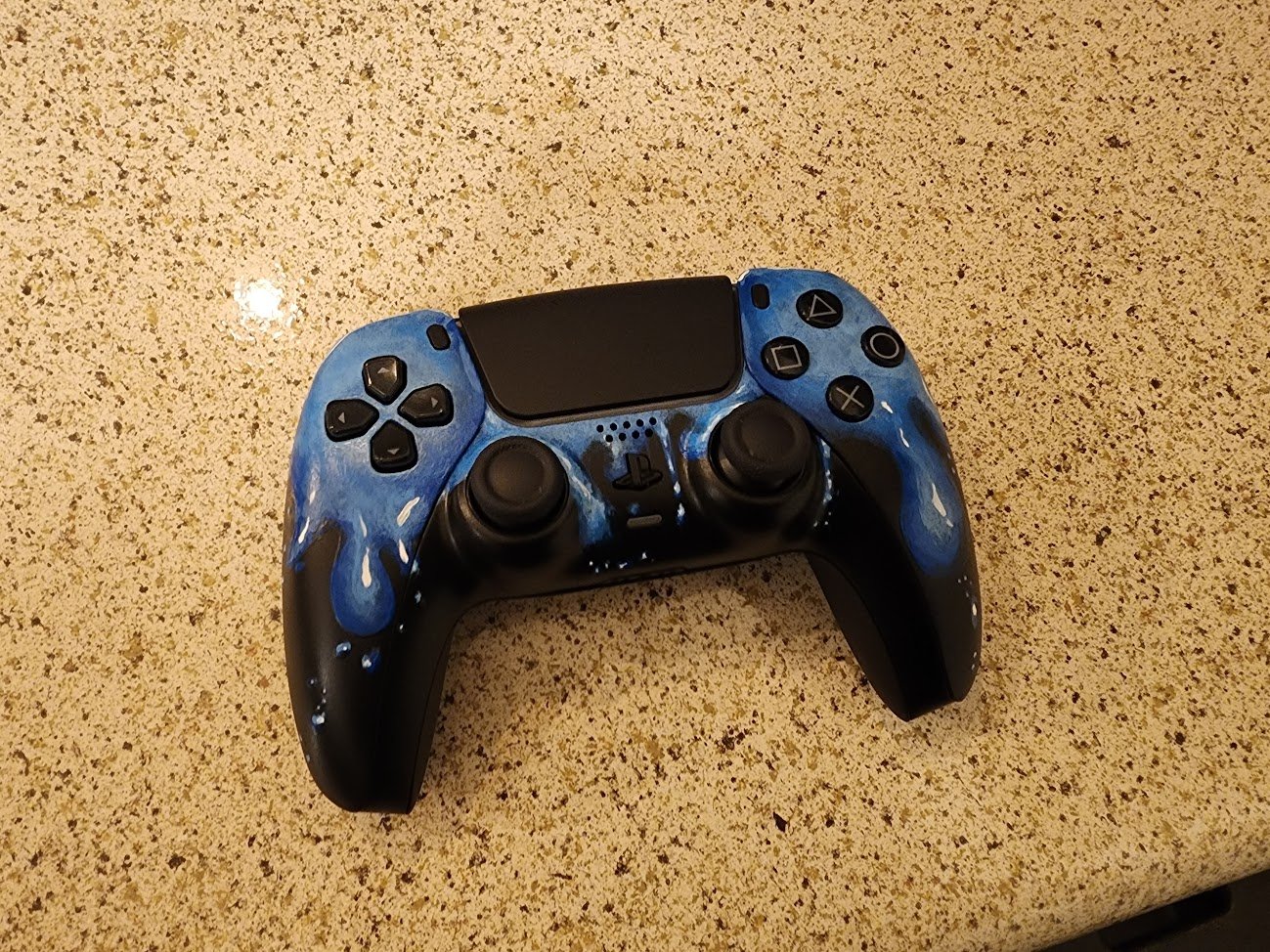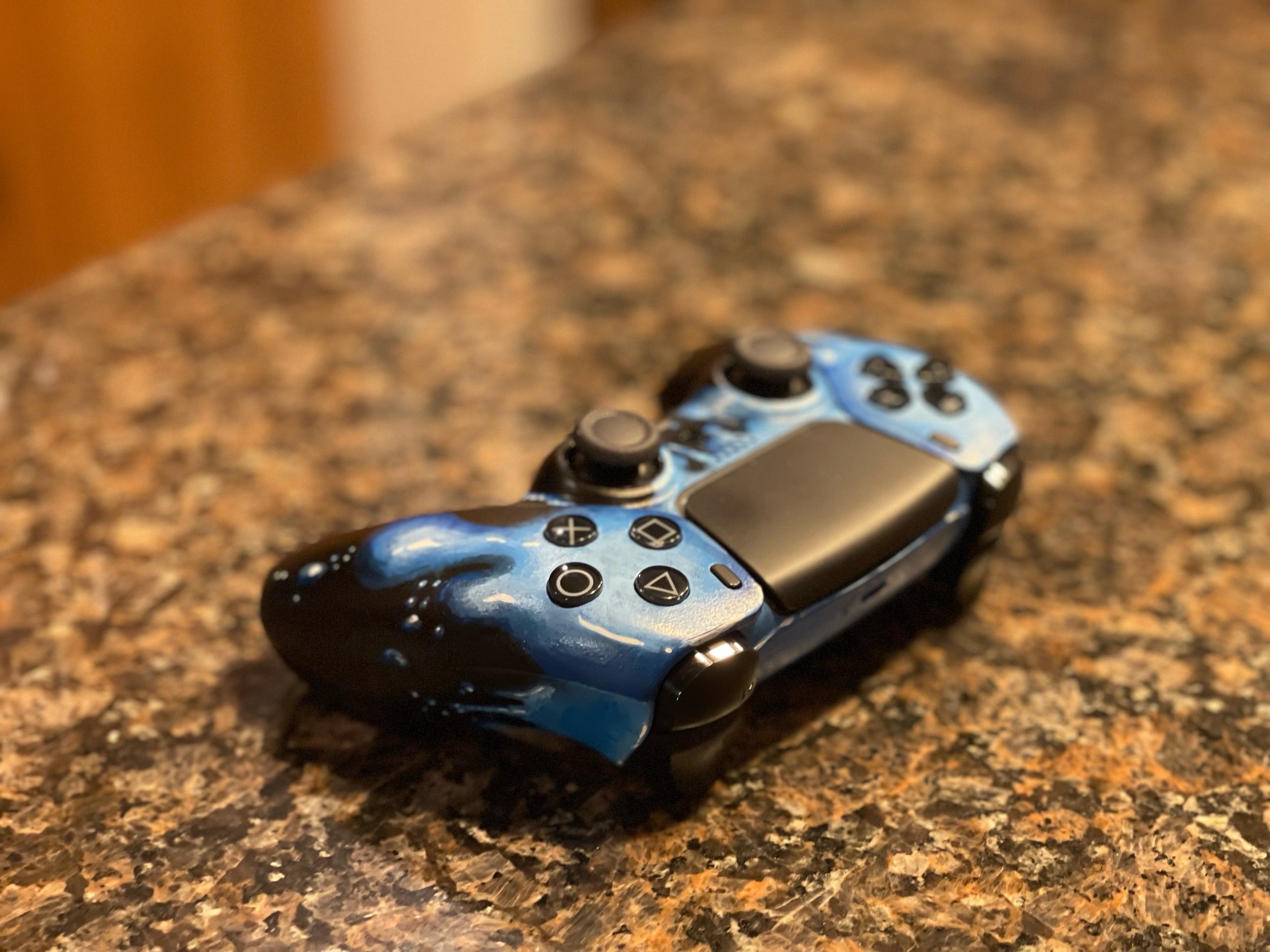Bending is my Middle Name | Bender Cosplay Part 2
The main goal of this stage of the project was to build out a shoulder plate and chest section…
Hello, there! In this week’s video I wrapped up my test-fit cardboard build of the Bender costume. Next time we will be working on modeling the 3D printed parts! I actually decided in the middle of this stream that I had gotten as much information as I needed, and switched to the 3D modeling. The main goal of this stage of the project was to build out a shoulder plate and chest section. The hope is to get an idea of how much room I would have inside the costume and what the dimensions and angles would need to be in order for it to fit me, but still look accurate to the character. I decided to stop before the arms and legs as I have a plan for them that can’t really be accurately recreated in the medium of cardboard. I already had the head built, so the next step was to make a ring for it to seat into. I rolled a thin strip of cardboard up so that it took on a curved shape, then cut the whole thing lengthwise to create two strips with the same curve.
When wrapped around to make a ring, they were not anywhere close to perfectly circular. At the time, I was thinking that was why they needed to have a matching curve. It hadn’t occurred to me that the helmet which would be fitting into it was nearly perfectly circular, and that tension from attaching the two rings to each other would make them perfect circles anyway. At this point, I was more concerned about eliminating the overlap you can see in the photo below. I was worried that the extra thickness could cause issues with shape while the helmet was being seated and result in a less-than-perfect fit. Fortunately it was easy to cut the strips to meet evenly and tape them at the ends without any overlap so this problem was completely avoided.
I fit the rings individually based on the helmet. One to the outside, and the other to the inside. Then, taking strips of painter’s tape, I taped them to each other as evenly as possible, leaving a groove for the edge of the helmet to fit into. Normally, blue tape would be exactly the wrong thing for a cosplay project, as it’s not very sticky, but for my purposes it was perfect. I wanted to be able to undo and change things with minimal commitment. For some of the connections that needed to be more permanent for strength, I re-used industrial staples from one of the larger boxes, as well as some zipties. I was really pleased with the neck ring, though, which felt surprisingly rigid after the two were taped together.
The test fit was mostly successful. I did run into a small issue, which was the mouth plate just inside the helmet. The bottom edge of it reached just low enough to get in the way of the fit I had worked so hard to achieve, so at the end of the day I ended up cutting a notch out of the inner ring to accommodate the plate. After that was done, the helmet seated into the ring perfectly.
Next, I moved on to the shoulder plate. In hindsight, the ring did not need to be anywhere near as large as it ended up being. I figured more was more, because I wanted to be sure that it was large enough to take on the angle at Bender’s shoulders and still be big enough around. I definitely overdid it a bit. If I were to do it again, though, I would go just as big. Always better to leave room for mistakes.
To introduce the angle to the shoulder plate, I cut a slit through half of it and overlapped it on itself. It… kind of worked. As you can see in the photo below I did end up with mostly just a crease where I overlapped, and then a matching one on the opposite side. Sit’s nicely on my shoulders like some kind of Elizabethan ruff, but doesn’t really look like Bender. Shortening it and increasing the angle will definitely help in the final build. I am struggling with what I want to build the main body section out of, I suspect that foam will not have enough structural integrity. The whole costume will be hanging from this shoulder plate, which will be mounted to a chest harness that I will be wearing underneath the costume to save my back from the weight. So far, my best guess is that I will cut and bend a piece of sheet metal, or make a buck out of sand or something and heat-form a sheet of acrylic. Neither sounds too appealing to me at the moment, but I will keep thinking on it.
The final step was fairly easy. I sliced one of the cardboard boxes all the way up, making it into a single flat sheet, and attached it around the edge of the — now shortened — shoulder plate to make a tube, and pulled it together on the bottom after cutting a number of slits to achieve the trademark taper of Bender’s barrel chest. I fit into the costume just fine, but the armpits are pretty far away from mine. Even if I shrink the top shoulder plate a little more, I am going to be hard-pressed to reach all the way down to the fingers on the arms, so I expect I will be operating those with some simple puppeteering.
I’ve now moved on to 3D modeling the helmet. This Wednesday, I will be continuing that and testing out some small printed pieces that will confirm dimensions and assembly fit. I will also be playing around with the internal mechanics for the hands, and a couple of other expressive features over the next couple of weeks, so keep an eye out for that very soon! If you would like to support this project, or anything else I am working on, check out the Patreon page! No matter what project you choose to support, you get access to all the same perks and behind-the-scenes streams. If that isn’t your cup of tea, it would mean the world to me for you to share this post and anything else you like with your fellow creatives! Thanks for reading, it’s been a blast as always. I’ll see you in the next one!
Cardboard Bender Helmet! | Building a Bender Costume Part 1
The Bender Project is officially underway and off to a spectacular start!
Hello, there! The Bender Project is officially underway and off to a spectacular start! Last week I assembled the basic structure of the helmet out of cardboard, as a way of getting my head around the shapes involved in making this costume work. There will be more to see this week, so make sure to check out the stream this Wednesday to see an update on that! Also, make sure to watch the video when that goes live on Monday. For now, though, let’s walk though the first stage of this process!
The first step was to roll out the cardboard so that I could have a nice, round cylinder as the foundation for the head. While I was rolling, I made sure to press very firmly into the table and rock the cardboard roll forward and back to really work the bend into it. It makes a spiral, with the middle having a much tighter curve compared to the outside edge. To combat this and try to keep an even cylinder, I put the middle of the spiral on the outside when I closed the cylinder. I held the tube around my head to get a proper size, and tried to include a little bit of wiggle room to account for different materials in the final build.
The resulting shape was fairly solid, but not perfectly round. The solution to that was to cut out a cardboard circle with the same radius as my tube and attach it on the inside to hold everything in the right shape. Eventually, that worked but not without cutting the disc a little too small and leaving me needing to shrink the cylinder to fit. I suppose I could also have cut a new disc, but who has the time? Long story short, at this point any wiggle room was gone, and the cardboard was up against my nose.
With the tube adjusted the disc fit perfectly and… the helmet wasn’t perfectly round. Unfortunately my method of using a string tied to a pen to draw my circle left me with imperfect results, but it was good enough to get by. I placed the disc about 2 inches from the top of the helmet, and taped it into place, leaving plenty of room below for my head. I cut out a space for the mouth, and it was beginning to look like that would be the best place for my eyes to line up so I could see.
The helmet felt much more comfortable with the mouth hole cut out, but there would still be a panel covering that opening. That panel would actually be inset, leaving me with even less room. It was becoming clear that I would definitely need to scale the helmet up slightly in order for this to work, but that’s a problem for another day. For the time being, this proof of concept was looking promising.
The visor was much easier than I was expecting. I used the edge of the tube to trace arcs into the edge of two strips of cardboard, and folded the rest around to meet up on the sides. Just a little bit of tape was all I needed and the silhouette was really starting to take shape, but we were still missing the signature chrome dome.
This was a much more challenging undertaking. The helmet had a few inches of opening at the top to support the dome piece, and since this build is purely practice and research, I decided things didn’t need to be perfect or pretty. The top part of the new shorter tube was cut into strips, and those strips were curled over to meet each other at the top of the head.
The first attempt to close up the top of the head left things a little bit short, but all I had to do was cut the strips down a little further, and everything closed up perfectly. I was happy with the shape, but the size was a little bit wrong. I ended up needing to shave two or three inches off of the top of the head, and push that support circle on the inside a little lower, and suddenly everything came into alignment. Fortunately, having less room inside the helmet wasn’t an issue given the fact that my head will be lower down anyway.
At this point, I was able to get an idea for how much extra height this costume will add. It doesn’t seem like it will be an issue, but I should really be smart about how I attach that antenna or I am going to be gluing that on all day long whenever I use this thing. As I write this, I’m thinking it may be a good idea to attach the antenna with a magnet, and have some sort of internal safety chain. That way it can get knocked off without being lost, and repair would be a snap. Literally.
Pictured above: Man happy about his recent robot murder. This picture really gives you an idea of how big the head is compared to me, and what size this bender costume is going to end up being at the end of the day. It’ll be a bit extreme, since he’s only around 6 foot or so in the show, but I think it’ll just make the cosplay look a little more dramatic and draw some extra attention. For that reason, I’ve been considering a gold finish, a reference to Futurama Season 4 Ep. 15, The Farnsworth Parabox.
Overall, we are looking at an almost complete success. The next step will be to build the shoulder plate, which I will be doing over on Twitch this Wednesday at 4 eastern. Thanks for reading. It’s been a blast, as always! I’ll see you in the next one.
Custom Playstation 5 Controller
Last December, my brother commissioned a custom controller from me.
Hello, there! Since I was in high school, I have enjoyed spicing up controllers, consoles, and even some toys with a custom paint job. I like taking something generic and making it unique. Back in the day, I took an Optimus Prime toy and gave it a new coat of paint to look like Nemesis Prime, it was glorious but I’m pretty sure that now lives in a box in my parents’ attic. Last December, my brother commissioned a custom controller from me. It had actually been a little bit since I had done one, and I had quite a bit of fun getting back into the swing of it. Okay, enough of the recipe blogger intro, first thing I did was draw up a couple of sketches for my brother to zero in on a design.
He knew that he wanted some kind of a splatter pattern. He had previously decorated a PS4 controller for himself, and went with a sort of paint brush flick, light pattern splatter. For the new controller, he made it clear that he wanted something that would look more cartoony, less speckled and more big drips of paint. I went with something that was intended to feel like it was thrown grips-first into a puddle of paint, with the splatter rising up from the bottom. For contrast, I did the sketch in red, but we both agreed that blue would be a good color for the final product as the red looked a bit too much like blood and that wasn’t what he was looking for.
The main note he gave me was that the splatter would look better coming from the top, other than that, he requested more variety in the size of the drips. I think both of those ideas resulted in a much better final product, and he seemed to be satisfied with the result. I ended up following the concept above fairly accurately in the actual project. Now that we had decided on a design, it was time to get to work. Before I could do anything, though, I had to take the controller apart.
I was a little bit rusty, so I made sure to have a guide video up on the screen and went through the process meticulously- even going so far as to pull up a separate guide because the one I was using was for a slightly older model of the controller, and Sony had since replaced some screws with plastic tabs, presumably to save money on hardware. All in all, it came apart pretty easily, although I did have to disassemble more of the internal components than I would really have liked to be able to do this. On older controllers I worked on, everything was contained in a sort of inner chassis, with the outer shell attached to that, separate from all the components. These controllers have quite a few more features crammed into the same space, so they have had to get more creative with where ribbon cables are run. All to say, there was quite a bit of dismantling before I got to paint.
Not having prepared a concept sketch for the back, I just sort of flew by the seat of my pants. I think I managed to keep the same kind of splatter pattern as I have on the front, but I do thing that it looks a little too even, almost like all the globs are in a single file line, looks a bit weird to me, but it’s on the back. The front came out spectacularly, and looks just like the sketch but better. I painted this with acrylics, starting with a gentle sanding over the whole shell, and a layer of primer to make sure everything stuck nicely. I sealed it up with a couple layers of waterproof satin finish. My brother requested that it be shiny, but not so shiny that it outshined the painted shines. I think I managed to achieve that.
The controller came back together extremely nicely, everything fit the way it was supposed to for the most part. I did have a couple of minor snags, the front plate that goes around the thumb sticks and PS button is a sort of compression fit where it tucks in around the touch pad, with an additional layer of paint, that definitely took a little extra force to put back in there than it did during my test reassembly. The other issue was a little more significant. I didn’t notice that one of the function buttons at the top of the controller was sticking. Those small, oval buttons fit very snugly into the holes in the shell. When I painted, even with the masking tape I had applied, a small amount managed to drip into that hole and cause some friction with the button after it was reassembled. Picture not related, just a prettier picture on my brother’s counter:
I was able to fix up the stuck button fairly easily by taking the controller back apart, and scraping out the inside of the hole with a knife. With that fixed, the controller worked perfectly and Alex has been using it happily since. I have his other controller, a white one, with me in the Shoudio and I will be giving it a fiery paint job to complete the set. That will be going down over on the twitch stream, you can find me there at this link. I’m looking forward to doing more projects like this, if you would like me to customize a controller or console for you please reach out to me through the contact page. Thanks for reading! It’s been a blast as always. I’ll see you in the next one.



























